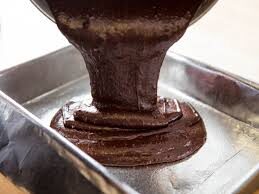Introduction:
Pastry making has long been considered an art form, requiring skill, precision, and creativity. Over the years, technological advancements have revolutionized the way pastry chefs approach their craft, opening up new possibilities and pushing the boundaries of what’s possible in the world of desserts. From innovative kitchen gadgets to cutting-edge techniques, technology has transformed pastry making into an exciting blend of tradition and innovation. Through ZeroIn Academy, the best Baking Classes in Chennai learn more about the tools and trends to start baking the new way.
Precision and Consistency:
One of the most significant ways technology has enhanced pastry making is through precision and consistency. Modern kitchen appliances, such as digital scales, temperature-controlled ovens, and sous vide machines, allow pastry chefs to achieve unparalleled accuracy in their recipes. Gone are the days of eyeballing measurements or relying on guesswork; today’s chefs can rely on precise measurements and controlled cooking environments to produce consistent results every time.
Digital scales have replaced traditional measuring cups and spoons, enabling chefs to measure ingredients down to the gram for more accurate recipes. This precision is especially crucial in delicate pastry recipes where the ratio of ingredients can make or break the final product.
Temperature-controlled ovens ensure that pastries bake evenly and at the perfect temperature, eliminating the risk of undercooked or burnt edges. Pastry chefs can program these ovens to follow precise baking profiles, resulting in consistently golden-brown crusts and moist interiors. The best Baking Institute In Chennai conduct classes to teach the importance of temperature while baking and how it affects the texture of the ingredient
Sous vide machines have also found their way into pastry kitchens, offering a controlled method for cooking custards, creams, and other delicate components. By vacuum-sealing ingredients and cooking them in a precisely controlled water bath, chefs can achieve perfect textures and flavors that would be difficult to replicate using traditional methods.
Innovative Tools and Equipment:
Technology has also introduced a wide variety of tools and equipment that have revolutionized pastry making. From 3D printers to molecular gastronomy kits, these gadgets offer new ways for chefs to unleash their creativity and experiment with unique flavors and textures.
3D printers have gained popularity in pastry kitchens for their ability to create intricate decorations and molds with precision and speed. Chefs can design custom molds and shapes using computer software and then print them using edible materials such as chocolate or sugar. This technology allows for the creation of stunning, one-of-a-kind desserts that were once only possible by hand.
Molecular gastronomy kits, which include tools such as siphons, rotary evaporators, and liquid nitrogen tanks, have also become essential for adventurous pastry chefs. These tools enable chefs to manipulate the physical and chemical properties of ingredients, creating foams, gels, and other innovative textures that add a modern twist to classic desserts.
Automation and Efficiency:
In addition to precision and innovation, technology has also improved the efficiency of pastry making through automation. Time-consuming tasks such as mixing, kneading, and tempering chocolate can now be performed quickly and effortlessly with the help of specialized machines.
Stand mixers equipped with powerful motors and multiple attachments make quick work of mixing doughs, batters, and creams, freeing up chefs to focus on other aspects of their recipes. These mixers can handle large batches of ingredients with ease, ensuring consistent results without the risk of overmixing or undermixing.
Chocolate tempering machines take the guesswork out of working with chocolate, allowing chefs to melt, temper, and mold chocolate with precision and speed. By controlling the temperature and agitation of the chocolate, these machines produce glossy, perfectly tempered chocolate that sets quickly and evenly.
Automated piping machines have also streamlined the process of decorating pastries with intricate designs and patterns. Chefs can program these machines to pipe frosting, ganache, or other decorations onto desserts with precision and consistency, saving time and reducing waste.
Access to Information and Inspiration:
Perhaps one of the most significant ways technology has enhanced pastry making is by providing chefs with access to a wealth of information and inspiration. The internet has become a treasure trove of recipes, tutorials, and inspiration, allowing chefs to learn new techniques, discover innovative flavor combinations, and connect with other pastry enthusiasts from around the world.
Social media pages like Instagram and Pinterest have become invaluable tools for pastry chefs to showcase their work of art and connect with a global audience. Professional Bakery Courses In Chennai let their Chefs share photos of their latest creations, interact with followers, and gain inspiration from other chefs, pastry artists, and food bloggers and teach people to create more innovative creations.
Online forums and communities dedicated to pastry making provide a space for chefs to ask questions, share tips, and seek advice from experienced professionals. Whether it’s troubleshooting a recipe or brainstorming ideas for a new dessert, these online communities offer support and camaraderie for pastry chefs at every level.
Sustainable Practices:
Lastly, technology has played a crucial role in promoting sustainability within the pastry industry. From energy-efficient appliances to eco-friendly packaging materials, chefs are embracing technology to reduce their environmental impact and promote more sustainable practices.
Energy-efficient ovens, refrigerators, and other kitchen appliances help reduce power consumption and lower electricity costs, while also minimizing the carbon footprint of pastry operations. Chefs can also utilize compostable or biodegradable packaging materials for their desserts, reducing waste and environmental pollution.
Advancements in food preservation technology, such as vacuum sealers and cryogenic freezing methods, allow chefs to extend the life of ingredients and reduce food waste. By maximizing the use of fresh, seasonal ingredients and minimizing waste, pastry chefs can create delicious desserts that are not only beautiful and flavorful but also environmentally responsible.
Conclusion:
In conclusion, technology has revolutionized the world of pastry making, offering chefs new tools, techniques, and opportunities for creativity and innovation. From precision and consistency to automation and efficiency, technology has transformed pastry kitchens into hubs of experimentation and discovery. With access to a wealth of information and inspiration online, pastry chefs have never been more empowered to push the boundaries of their craft and create desserts that delight the senses and inspire the imagination. As technology continues to evolve, the future of pastry making looks brighter and sweeter than ever before.

